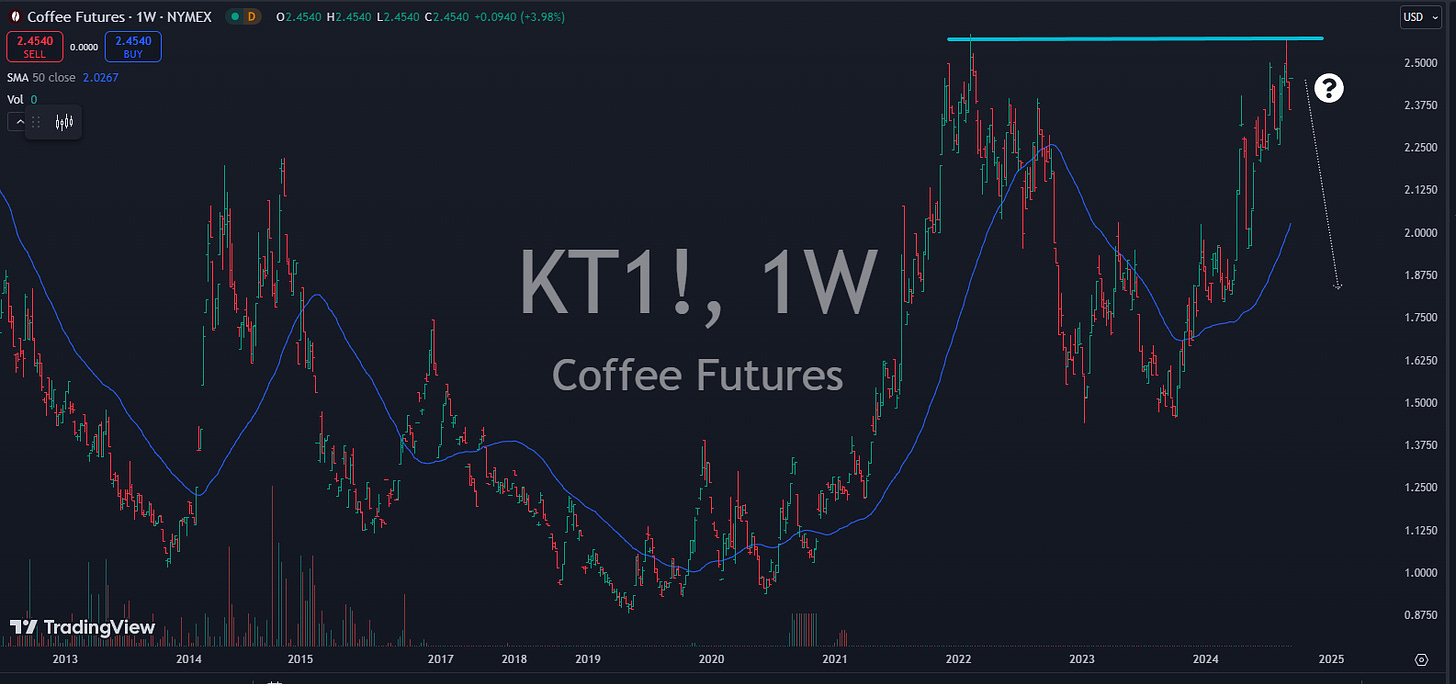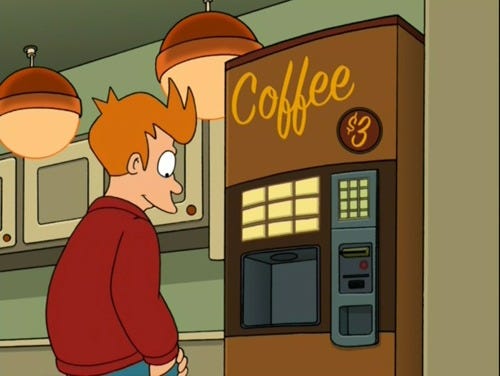By the time this is revealed, we will know whether double top-forming coffee futures will be held for a while to keep prices down, or whether it will march to new, higher coffee prices during the holiday season.
Regardless of the short-term direction, the coffee market has been interested recently with a flashy press release about rising futures prices and a new job from the CEO of Starbucks’ home, known as Fixit of the restaurant industry.
His aim is to bring back the trend-sensitive era of coffeehouses after a slow decline into the online experience of commoditized transactions in today’s brick and mortar shops.
Does it work? It’s difficult to say. It’s not that difficult to say that the price of a cup of coffee is likely to drop soon, so the charming atmosphere of drinking it is the least they can.
Visual Capitalist Put a great chart of current supply chain dynamics for a cup of coffee.
Some things stand out for me:
-
Coffee is a highly interconnected supply chain
-
Retailer overhead is far the biggest cost
-
Cultivating and shopping coffee beans is currently the lowest cost item on the chain.
Geopolitics expert Peter Zeyhan believes this will all change soon.
The central premise of Zeihan’s future is to accelerate the trend of globalization towards more nationalistic and regional supply chains. Combined with a decline in working-age population and adjustments to climate zones, coffee becomes an early casualty.
Don’t worry. The coffee won’t go away. Zeihan always speaks from a number of years and decades when his trends continue, not days or months. They are translated into the world of a largely grown, single-type coffee bean lineage, such as corn and wheat, to make it cost-effective.
Production costs will be a major obstacle to obtaining exotic, high-end coffee beans from local baristas over the next few years.
Looking back at the various stages
-
Climate change affects who and where growers can produce coffee (stage 1)
-
New globalization costs such as tariffs and transport upcharges will hit (stage 2)
-
Roasting and processing beans require workers and factories close to the home (stage 3)
-
Lack of raw materials and products for people who cannot grow their own (Stage 4)
-
High labor costs and real estate shifts affect the profitability of physical locations (stage 5)
A more detailed breakdown here –
Enjoy the high-end thing as possible, as the Instant Ground Maxwell House/Chock Full O’Nuts/ and the Costco brand may become your future sooner than you think.
Are you interested in joining the Trader Papa Podcast in 2025? Shoot the email! I want you to sit for discussion
thought? question? comment?
Reach out! Maybe I’ll post the full topic or as a Q&A
corderdads@substack.com














